The Journal of Caribbean Ornithology (JCO) is excited to announce the release of a Special Issue on the Status of Caribbean Forest Endemics (Volume 30, Issue 1). Inside you’ll find a total of 10 publications, 9 of which focus on different forest endemic birds from central Cuba down to Grenada. The tenth publication provides statistical evidence of the JCO’s invaluable role as a multi-lingual, regional scientific journal that outshines other ornithological journals through its distinct subject strengths, especially in terms of papers published on the distribution and abundance of forest endemic species.
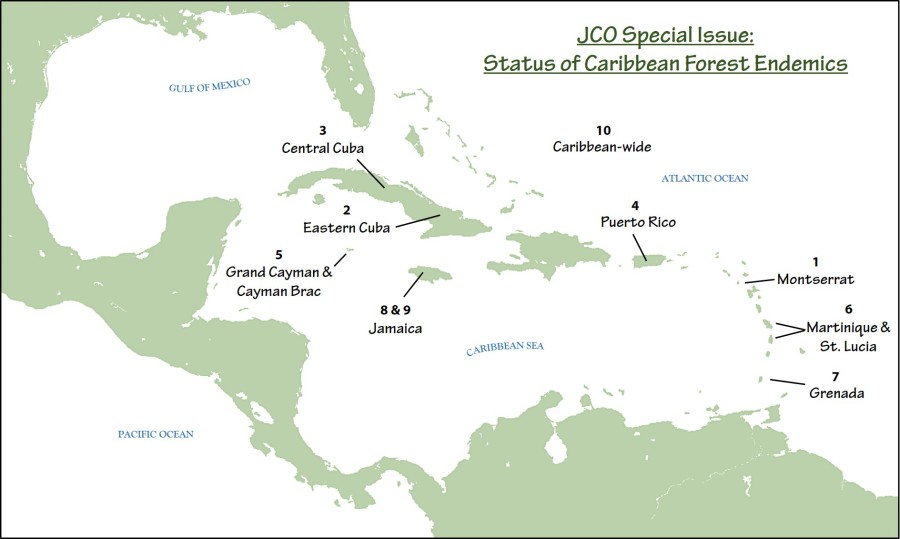
In this Special Issue, we highlight those strengths with a collection of publications specific to forest endemic birds, many of which have become icons and flagship species for their specific island communities. In some cases, there is good news to report, whether it be population growth or range expansion, while in other cases, there are greater causes for concern and subsequent action on our part. The extirpation of the Golden Swallow from Jamaica, for example, is a stark reminder of the vulnerability of some of our forest endemics, and a prime example of the complexities of the problems that island birds face.
As stewards of island bird communities, we know that we must often be two steps ahead when it comes to making informed decisions with local conservation management practices. Islands are filled with diverse fauna and flora that interact in ways that can’t be seen anywhere on the mainland, but simultaneously their populations can often suffer the most from even the smallest disturbances. Our resilience must make up for those species that have such little of it. And here at the JCO we firmly believe that making the most current and impactful research available to our Caribbean community is one of the many critical steps towards doing exactly that.
The following are brief synopses of each publication you’ll find in our Special Issue, which we hope will quickly spark your interest in reading through each in more detail.
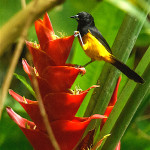 Our Special Issue starts off in the forests of Montserrat, a habitat heavily impacted by volcanic activity over the last twenty years. In Bambini et al.’s Current population status of four endemic Caribbean forest birds in Montserrat, current populations of four endemic forest birds are surveyed for, including the Bridled Quail-Dove (Geotrygon mystacea), Forest Thrush (Turdus lherminieri), Brown Trembler (Cinclocerthia ruficauda), and Montserrat Oriole (Icterus oberi).
Our Special Issue starts off in the forests of Montserrat, a habitat heavily impacted by volcanic activity over the last twenty years. In Bambini et al.’s Current population status of four endemic Caribbean forest birds in Montserrat, current populations of four endemic forest birds are surveyed for, including the Bridled Quail-Dove (Geotrygon mystacea), Forest Thrush (Turdus lherminieri), Brown Trembler (Cinclocerthia ruficauda), and Montserrat Oriole (Icterus oberi).
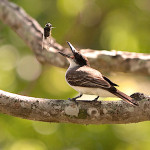 We move to the Greater Antilles where, in the face of recent extirpations from its former range, Peña et al. bring us in-depth news on the endangered Giant Kingbird’s remaining foothold in Cuba with their publication Distribution and abundance of the Giant Kingbird (Tyrannus cubensis) in eastern Cuba.
We move to the Greater Antilles where, in the face of recent extirpations from its former range, Peña et al. bring us in-depth news on the endangered Giant Kingbird’s remaining foothold in Cuba with their publication Distribution and abundance of the Giant Kingbird (Tyrannus cubensis) in eastern Cuba.
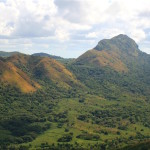 Moving westward across the Caribbean’s largest island, we are now presented with information on a newly identified population of Palm Crows that may exceed 200 individuals, thanks to recent work by Maikel Cañizares Morera in his publication Nueva localidad para el Cao Ronco (Corvus palmarum minutus; Aves: Corvidae) en Cuba Central.
Moving westward across the Caribbean’s largest island, we are now presented with information on a newly identified population of Palm Crows that may exceed 200 individuals, thanks to recent work by Maikel Cañizares Morera in his publication Nueva localidad para el Cao Ronco (Corvus palmarum minutus; Aves: Corvidae) en Cuba Central.
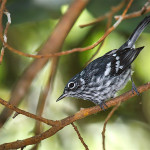 To the east, on the island of Puerto Rico, Anadón-Irizarry et al. provide us an invaluable update on the Status and recommendations for the recovery of the Elfin-woods Warbler (Setophaga angelae) in Puerto Rico. In light of devastating impacts to forest habitats by recent hurricanes, this work will be pivotal in helping post-hurricane conservation efforts understand the species’ vulnerability and most pressing needs.
To the east, on the island of Puerto Rico, Anadón-Irizarry et al. provide us an invaluable update on the Status and recommendations for the recovery of the Elfin-woods Warbler (Setophaga angelae) in Puerto Rico. In light of devastating impacts to forest habitats by recent hurricanes, this work will be pivotal in helping post-hurricane conservation efforts understand the species’ vulnerability and most pressing needs.
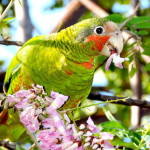 In Haakonsson et al.’s Conservation status of Grand Cayman (Amazona leucocephala caymanensis) and Cayman Brac (Amazona leucocephala hesterna) Parrots, we find ourselves ~250 miles south of Cuba amid the Cayman Islands, where alarmingly two subspecies of Cuban Parrot are being found in fewer, more concentrated population sites.
In Haakonsson et al.’s Conservation status of Grand Cayman (Amazona leucocephala caymanensis) and Cayman Brac (Amazona leucocephala hesterna) Parrots, we find ourselves ~250 miles south of Cuba amid the Cayman Islands, where alarmingly two subspecies of Cuban Parrot are being found in fewer, more concentrated population sites.
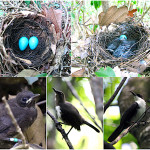 Our journey swings us back east into the Lesser Antilles to the neighboring islands of St. Lucia and Martinique, where Mortensen et al. report on the Current status of the Endangered White-breasted Thrasher (Ramphocinclus brachyurus), a dry forest songbird endemic to Saint Lucia and Martinique. Heavily geographically restricted on both islands and facing myriad threats, new and amplified life history information on the White-breasted Thrasher reviewed in this publication will undoubtedly prove invaluable for new conservation plans underway.
Our journey swings us back east into the Lesser Antilles to the neighboring islands of St. Lucia and Martinique, where Mortensen et al. report on the Current status of the Endangered White-breasted Thrasher (Ramphocinclus brachyurus), a dry forest songbird endemic to Saint Lucia and Martinique. Heavily geographically restricted on both islands and facing myriad threats, new and amplified life history information on the White-breasted Thrasher reviewed in this publication will undoubtedly prove invaluable for new conservation plans underway.
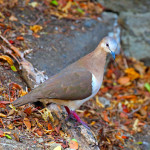 To the south lies the island of Grenada, where Bonnie L. Rusk has been undertaking Long-term population monitoring of the Critically Endangered Grenada Dove (Leptotila wellsi) on Grenada, West Indies. Here Rusk stresses the current critical state of the Grenada Dove based on long-term population trends and multiple obstacles facing species recovery.
To the south lies the island of Grenada, where Bonnie L. Rusk has been undertaking Long-term population monitoring of the Critically Endangered Grenada Dove (Leptotila wellsi) on Grenada, West Indies. Here Rusk stresses the current critical state of the Grenada Dove based on long-term population trends and multiple obstacles facing species recovery.
 Lastly, we set sail back up towards the Greater Antilles, finding our way to the beautiful island of Jamaica, and in particular its Cockpit Country – a region known for its seemingly impenetrable (yet still vulnerable) geography of karst-limestone hills. Herlitz Davis’ publication on Forest disturbance has negative consequences for the persistence of Jamaica’s threatened and endangered bird species in Cockpit Country brings forth evidence of an association between forest disturbance and bird distribution patterns in a globally important area for bird species that is under pressure from all sides by various types of habitat disturbance.
Lastly, we set sail back up towards the Greater Antilles, finding our way to the beautiful island of Jamaica, and in particular its Cockpit Country – a region known for its seemingly impenetrable (yet still vulnerable) geography of karst-limestone hills. Herlitz Davis’ publication on Forest disturbance has negative consequences for the persistence of Jamaica’s threatened and endangered bird species in Cockpit Country brings forth evidence of an association between forest disturbance and bird distribution patterns in a globally important area for bird species that is under pressure from all sides by various types of habitat disturbance.
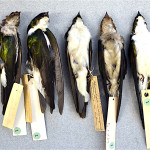 Pulling back to an island-wide view, Proctor et al.’s time censusing the remote corners of Jamaica for aerial insectivores completes an ongoing effort to determine whether any Jamaican Golden Swallows persist on the island in light of there having been no individuals reported since the 1980’s. The Last search for the Jamaican Golden Swallow (Tachycineta e. euchrysea) confirms the local extinction and highlights the importance of using new knowledge to strengthen conservation plans for the subspecies that persists on the island of Hispaniola to the northeast.
Pulling back to an island-wide view, Proctor et al.’s time censusing the remote corners of Jamaica for aerial insectivores completes an ongoing effort to determine whether any Jamaican Golden Swallows persist on the island in light of there having been no individuals reported since the 1980’s. The Last search for the Jamaican Golden Swallow (Tachycineta e. euchrysea) confirms the local extinction and highlights the importance of using new knowledge to strengthen conservation plans for the subspecies that persists on the island of Hispaniola to the northeast.
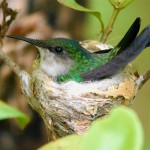 The Special Issue’s final publication is an equally important one in which we are empirically reminded of the unique niche that the JCO fills in the wider world of ornithological publications. The role of a regional journal as a depository for valuable ornithological data as demonstrated by Caribbean forest endemic birds, by Devenish-Nelson et al., is an uplifting report of the impact that our community’s journal is having on birds, people, and the bright future of research and conservation.
The Special Issue’s final publication is an equally important one in which we are empirically reminded of the unique niche that the JCO fills in the wider world of ornithological publications. The role of a regional journal as a depository for valuable ornithological data as demonstrated by Caribbean forest endemic birds, by Devenish-Nelson et al., is an uplifting report of the impact that our community’s journal is having on birds, people, and the bright future of research and conservation.
